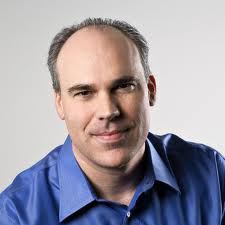 Dana Stalder, a Palo Alto-based general partner with Matrix Partners, is quick to note that he is “not a career VC.” In fact, he has spent much more of his career inside tech companies, from Netscape in the mid ‘90s, to the early online lead generation company Respond.com, to eBay, then PayPal, where he was a senior VP in charge of product, sales, marketing and technology when Matrix lured him away in 2008.
Dana Stalder, a Palo Alto-based general partner with Matrix Partners, is quick to note that he is “not a career VC.” In fact, he has spent much more of his career inside tech companies, from Netscape in the mid ‘90s, to the early online lead generation company Respond.com, to eBay, then PayPal, where he was a senior VP in charge of product, sales, marketing and technology when Matrix lured him away in 2008.
Still, Stalder isn’t shy about sharing some pretty specific ideas about the industry. When talking fund sizes, for example, he implies that funds that have grown far larger over time might be just a leetle motivated by management fees. Matrix, which has raised three $450 million funds in a row, is “less opportunistic about making money and more focused on helping build category-leading companies,” he says.
He also thinks that the days of the $1.5 million seed round – which became the norm around 2009, driven by ballooning numbers of seed investors – are nearing an end.
“It’s hard to build a business or prove that you can get a good markup off the back of that amount,” Stalder says. It’s also “terrible for the entrepreneur,” who winds up giving away up to 25 percent of the company over the course of a seed round and a seed extension round.
“Basically, they’re stuck in this no man’s land – running out of money without enough runway to take off – and they have the anxiety of having to bridge two rounds of seed funding for basically the same [dilution] as they’d [see with a Series A investment],” he says.
Stalder is an early-stage investor, so perhaps it’s no surprise that he thinks the “million-dollar seed round will come under pressure,” or that early-stage fundings will “revert back to the norm, which was the multimillion-dollar first round.”
A movement in the direction of larger first rounds would presumably benefit Stalder, who tends to invest in two companies a year and has led investments for his firm in both Zendesk, a help-desk software-as-a-service company, and online retailer Gilt Groupe, both of which are reportedly planning IPOs this year. (Before seed-stage investors changed the ratio, entrepreneurs had no choice but to give their business to venture capitalists.)
The news isn’t all rosy for Stalder. Thanks to seed investors, who have played a big role in grooming nascent companies and scaling them for investment, VCs now have the luxury of more information, acknowledges Stalder. They’ve grown “more accustomed to focusing on traction signals, and that wasn’t the case five years ago.”
Still, he suggests that that the trends towards larger deals will ultimately pay off for everyone.
“It might mean more syndication among the small seed funds,” says Stalder. “It might also mean that slightly fewer businesses get started.” Either way, he says, “Bigger rounds feel inevitable to me.”
Sign up for our morning missive, StrictlyVC, featuring all the venture-related news you need to start you day.
